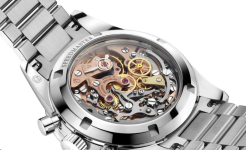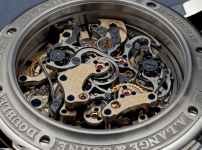Hello everyone,
I would like to ask your help to clarify me a little. I don't know much about watches, but they attract me and I love them a lot. respectively, I would like to know more details about them, and what are the differences between them. At the moment, I have a conflict with watch case backs. I notice that both in the replica industry and in the authentic watch industry there are models with solid casebacks and transparent ones. Is it true that those with a transparent caseback are more sought after by the clientele?
Why do some replica watches have a solid caseback, when the original model has a transparent one? And if we are talking about an authentic watch, which version has more value? I found authentic models that are valid both with open and solid casebacks. I wonder if there is any difference in the internal mechanism in them, the watch model being exactly the same. To be more specific, Constantin Vacheron has such a watch model. It is about 47200, it seems to me, which was initially proposed with a solid back. And the subsequent iterations were already available in a version with a transparent back. The replica watch (at least the one I found) is only with a closed steel caseback.
There are other watches that I found with a double caseback. and I was a little shocked to see that the price difference is huge. Now I'm wondering, is it possible to get one with a solid caseback, because it's cheaper, and then change it to a transparent one? Do watch repair experts deal with this?
Many apologies if from one question, I ended up asking 10 questions. but I'm really a bit confused and the information on google doesn't help me much. On the contrary, it confuses me even more. Thanks for any clarification.
Take care of yourself!
I would like to ask your help to clarify me a little. I don't know much about watches, but they attract me and I love them a lot. respectively, I would like to know more details about them, and what are the differences between them. At the moment, I have a conflict with watch case backs. I notice that both in the replica industry and in the authentic watch industry there are models with solid casebacks and transparent ones. Is it true that those with a transparent caseback are more sought after by the clientele?
Why do some replica watches have a solid caseback, when the original model has a transparent one? And if we are talking about an authentic watch, which version has more value? I found authentic models that are valid both with open and solid casebacks. I wonder if there is any difference in the internal mechanism in them, the watch model being exactly the same. To be more specific, Constantin Vacheron has such a watch model. It is about 47200, it seems to me, which was initially proposed with a solid back. And the subsequent iterations were already available in a version with a transparent back. The replica watch (at least the one I found) is only with a closed steel caseback.
There are other watches that I found with a double caseback. and I was a little shocked to see that the price difference is huge. Now I'm wondering, is it possible to get one with a solid caseback, because it's cheaper, and then change it to a transparent one? Do watch repair experts deal with this?
Many apologies if from one question, I ended up asking 10 questions. but I'm really a bit confused and the information on google doesn't help me much. On the contrary, it confuses me even more. Thanks for any clarification.
Take care of yourself!


